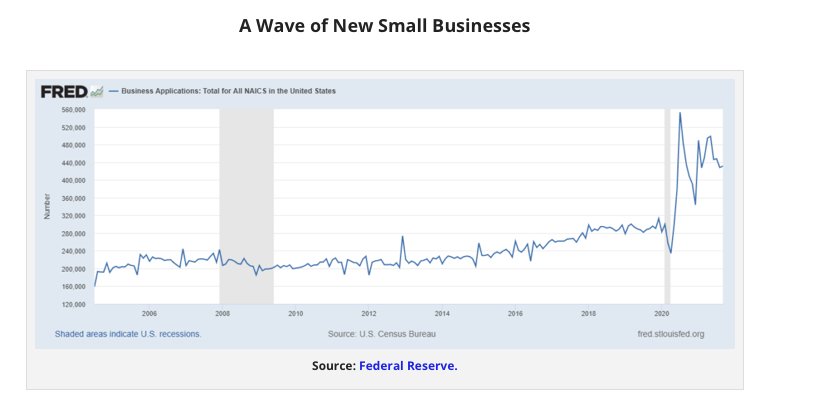While thinking about the labor shortage, a saying attributed to Mark Twain crossed my mind: “There are three kinds of lies: lies, damned lies, and statistics.”
Let’s delve into the statistics to see if I can make heads or tails of the labor shortage. I’ve heard a wide range of explanations for the abundance of help wanted signs:
- Workers are too scared of COVID-19 to leave their houses.
- The economy is overheating due to Fed stimulus.
- High unemployment benefits incentivizing people to stop looking for work.
- Moms are unable to find childcare.
- Boomers are taking early retirement.
- Young people opting to quit the rat race before they start it.
What do the numbers say? Let’s start with the labor force participation rate. This includes every American currently working and looking for work.

Source: Federal Reserve.
Labor force participation dipped in the pandemic and hasn’t recovered. Just before COVID-19 blew up the world, 63.3% of Americans aged 15-64 were participating in the labor force. Today, that number is 61.6%.
A difference of 1.7% might not sound like much. But that’s 1.7% of 205 million people, or about 3.5 million people that have simply dropped out.
But who are these people?
Entrepreneurial Class
They’re not lazy teenagers in need of a haircut and real job. The percentage of 16 to19 year olds in the workforce was 36.2% pre-pandemic, and it’s slightly higher today at 36.3%. It seems that rising wages motivated a small sliver of America’s youth to get off the couch!
They’re also not primarily moms struggling to find childcare. Labor force participation among women is down about 1.9%, not materially different from the general population.
What about Boomers deciding to hang up their cleats? Labor force participation among Americans 55 and older dropped 1.7%, from 40.3% to 38.6%, in line with the general population.
Of course, you can be “in the workforce” and not have a job. America has been a country of entrepreneurs since the very beginning, and we’ve all heard anecdotal stories of people quitting their jobs to take that leap. After living for nearly two years with the threat of a deadly virus, starting a business suddenly seems a lot less scary.
This is harder to prove in the data, as many small businesses are informal. But we can see it.
Before the pandemic, Americans were filing the paperwork for new business tax IDs at a rate of about 280,000 per month. That number has spiked to between 400,000 and 500,000 per month.
And again, these are only the businesses formal enough to get their own tax ID. We have no way of measuring how many side hustles have been started since mid-2020.

Source: Federal Reserve.
Takeaway
Many of these businesses will fail, and the would-be entrepreneurs will likely go back to being paycheck employers and employees. In my opinion, new workers will trickle back into the workforce in the years ahead.
Higher wages might also convince teenagers, stay-at-home moms, and would-be retirees to work in greater numbers.
In my view, a recession will cool off demand for labor in the short term, and cheap automation will replace it in the longer term. So, one way or another, this problem will get fixed.
But it’s not likely to happen overnight. So don’t be surprised if those help wanted signs stay posted a while longer.
This post first appeared on October 26 on the Money & Markets blog.
Photo Credit: Andreas Riemenschneider via Flickr Creative Commons
This piece is provided as educational information only and is not intended to provide investment or other advice. This material is not to be construed as a recommendation or solicitation to buy or sell any security, financial product, instrument, or to participate in any particular trading strategy.




